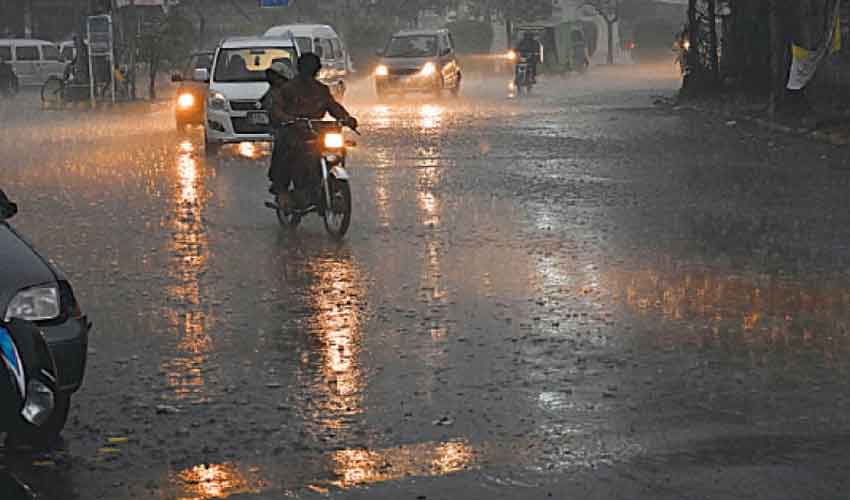The National Disaster Management Authority (NDMA) issued a high-alert weather advisory on Thursday, urging citizens across Pakistan to prepare for thunderstorms, strong winds, and hailstorms. These conditions have the potential to cause damage to crops, vehicles, and solar panels.
According to the NDMA, a new weather system is sweeping across the country, bringing with it an increased likelihood of heavy rains and hailstorms in various regions. The authority has advised the public to take precautionary measures and remain updated with local forecasts.
Severe Weather Expected Across Key Regions
The advisory predicts heavy rain, strong winds, and hail in Islamabad and Rawalpindi by 11 PM on Thursday night, with similar conditions anticipated in parts of Khyber Pakhtunkhwa, north Punjab, and south Punjab.
In Khyber Pakhtunkhwa, districts such as Peshawar, Charsadda, Swabi, and Mardan are likely to experience intense storms accompanied by hail and strong wind gusts.
Meanwhile, Rahim Yar Khan and Sadiqabad in south Punjab are also forecasted to receive potentially heavy rain and thunderstorms.
The advisory warns that areas of Azad Jammu and Kashmir, including Muzaffarabad and Neelum Valley, will face thunderstorms and heavy downpours. In the mountainous regions of Gilgit-Baltistan and Azad Kashmir, the risk of landslides is present due to saturated soils and persistent rainfall.
Potential for Damage to Property and Crops
The NDMA cautioned that the severe weather conditions could damage standing crops, vehicles, and solar energy systems. Farmers and rural communities have been advised to secure their fields and equipment, while urban residents are urged to avoid unnecessary travel and stay indoors during peak storm activity.
Monsoon 2025: Met Office Warns of Heavy Rains and Flood Risk
Concurrently, the director general of the Met Department, Mehr Sahibzad Khan, issued a high-alert advisory on Thursday, warning of an intensified monsoon season this year. Above-average rainfall is expected across several parts of Pakistan, potentially triggering floods and landslides.
Speaking at a press conference in Islamabad, Khan stated that the department is maintaining constant coordination with the National Disaster Management Authority (NDMA) and Provincial Disaster Management Authorities (PDMA) to ensure preparedness for possible extreme weather events.
“Monsoon in Pakistan typically arrives in July-August and continues until mid-October. Based on both local and international indicators, we are forecasting this year’s pattern a month in advance to enable timely preparedness,” said Khan.
Above-Normal Rainfall Predicted
The central and southern parts of the country are likely to receive 20% more rainfall than usual, while northeastern Punjab and Kashmir will also experience heavier downpours, which could lead to urban and riverine flooding.
In contrast, slightly below-normal rainfall is expected in northern KP and Gilgit-Baltistan, although rising temperatures in these areas could trigger glacial lake outburst floods (GLOFs).
“There is a risk of floods and landslides due to increased rainfall and temperature changes,” Khan cautioned. He urged all stakeholders to stay alert and implement early preparedness measures, especially in low-lying regions of Sindh and upper Khyber Pakhtunkhwa.



